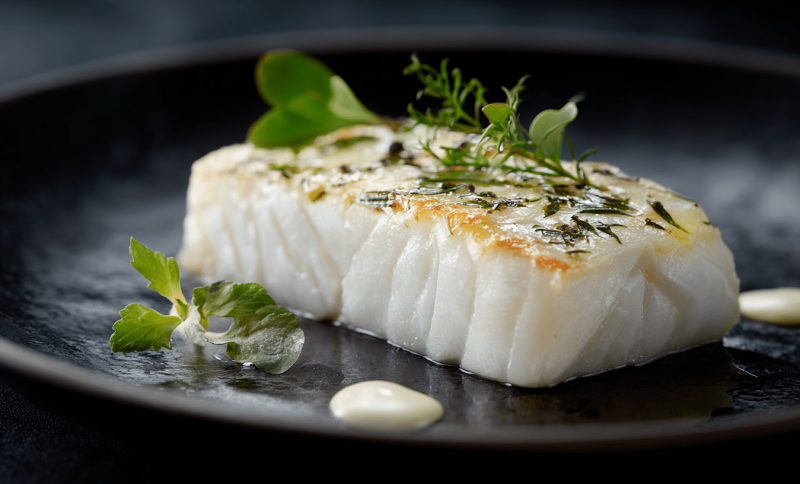Ordered halibut at a restaurant and was amazed by how tender and flaky it was, then tried cooking it at home, only to end up with something dry and disappointing.
You’re not alone! Halibut is one of those fish that seems tricky to get just right. It’s mild, flaky, and tasty when cooked properly, but it’s surprisingly easy to overcook and dry out.
The secret to perfect halibut isn’t some complicated chef technique. It’s actually pretty simple: cooking it to the right internal temperature.
Just like you wouldn’t want to undercook chicken or turn a steak into shoe leather, fish needs to hit that sweet spot where it’s safe to eat but still moist and delicious.
These are the specific temperatures that work, how to check for doneness, and techniques that consistently deliver moist, flavorful fish.
What Temperature Should Halibut Be Cooked To?
The most important number to know is 145°F (63°C), the USDA and FDA-recommended temperature for all fish.
However, many chefs prefer 130-135°F (54-57°C) for better texture and moisture. Why the difference?
Halibut is very lean with little fat, so it dries out easily when overcooked.
Here’s a key tip: when you remove halibut from the heat, it continues cooking for a few minutes, raising the temperature by about 5 degrees.
This is known as carryover cooking, and savvy cooks utilize it to their advantage.
Temperature Guide by Doneness
Just like steak can be rare, medium, or well-done, halibut can be cooked to different levels of doneness. Here’s a handy guide:
| Doneness | Internal Temperature | Description |
|---|---|---|
| Medium-Rare | 125–130 °F (52–54 °C) | Slightly translucent center, very moist. (Not recommended for everyone since it’s below the official safe temperature.) |
| Medium | 130–135 °F (54–57 °C) | Just barely opaque throughout. Tender, moist, and flakes easily; considered the ideal range by most chefs. |
| Medium-Well | 135–140 °F (57–60 °C) | Fully opaque and firmer texture. Still good, but less juicy than medium. |
| Well-Done | 145 °F (63 °C) and above | USDA safe minimum. Completely opaque and firm. Absolutely safe, but it can taste somewhat dry. |
Most home cooks find that 130-135°F gives them the best results. The fish is cooked enough that it doesn’t feel raw, but it’s still so moist and flavorful that everyone asks for seconds.
How to Cook Halibut Without Drying It Out
Now that you know the target temperature, let’s talk about how to actually get there without turning your beautiful halibut into cardboard.
- Use moderate heat: High, screaming-hot heat might seem like it would cook fish faster, but it actually works against you. Medium to medium-high heat gives you more control.
- Let it rest: Just like a steak, halibut benefits from resting for 3-5 minutes after cooking. The temperature will even out, and the juices will redistribute.
- Add moisture: Since halibut is so lean, adding a little fat or liquid helps it along significantly. A brush of olive oil, a pat of butter, or even cooking it in a sauce all help keep it moist and flavorful.
Best Cooking Methods
Different cooking methods work better for different situations. Here are the most popular ways to cook halibut, along with tips for hitting that perfect internal temperature.
1. Pan-Searing
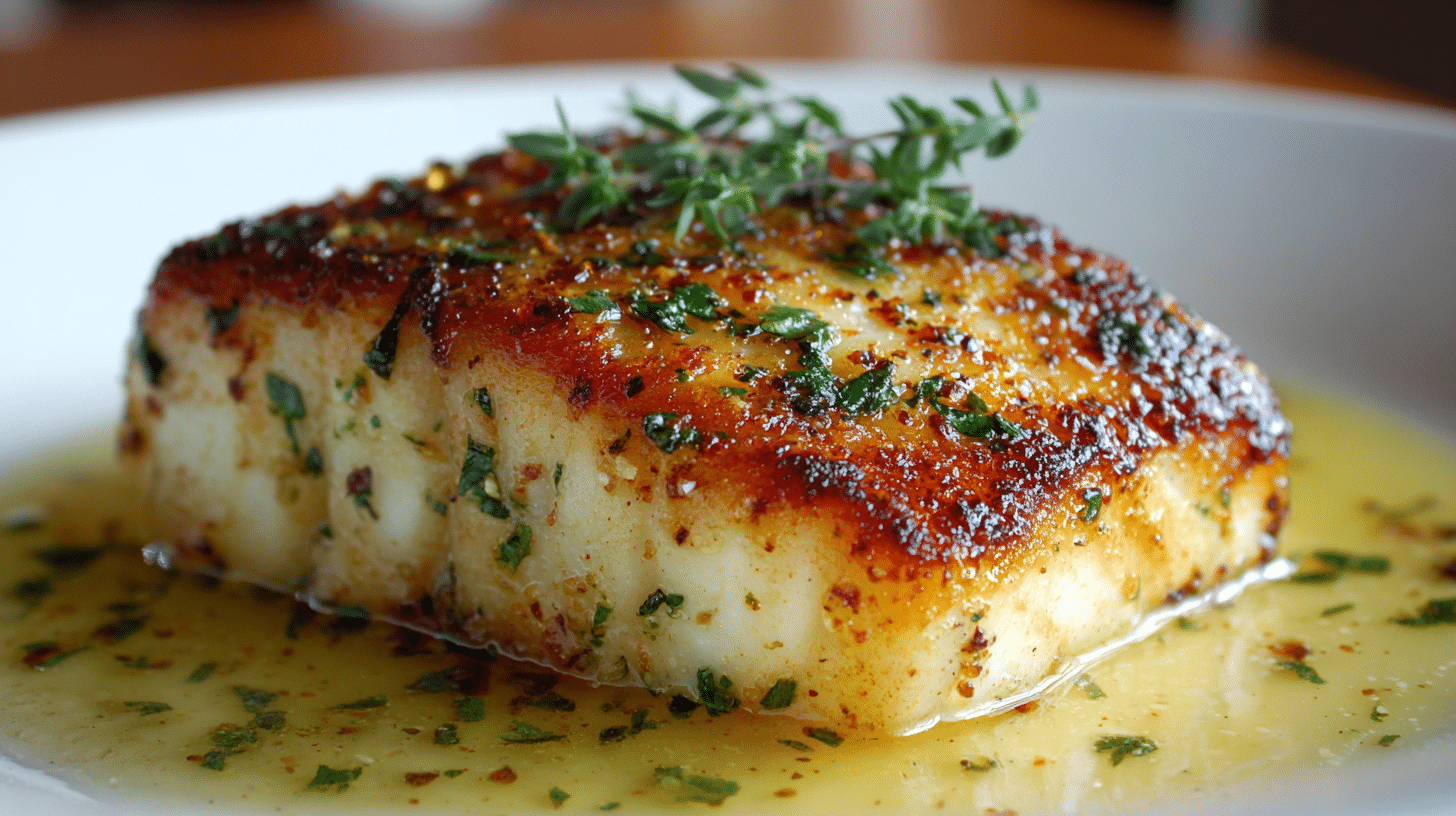
Heat oil or butter in a skillet over medium-high heat. Pat your halibut completely dry, then season with salt and pepper.
Cook for 3-4 minutes per side, checking the temperature starting at the 6-minute mark. When it reaches 125-130°F, remove from heat and let rest.
2. Baking
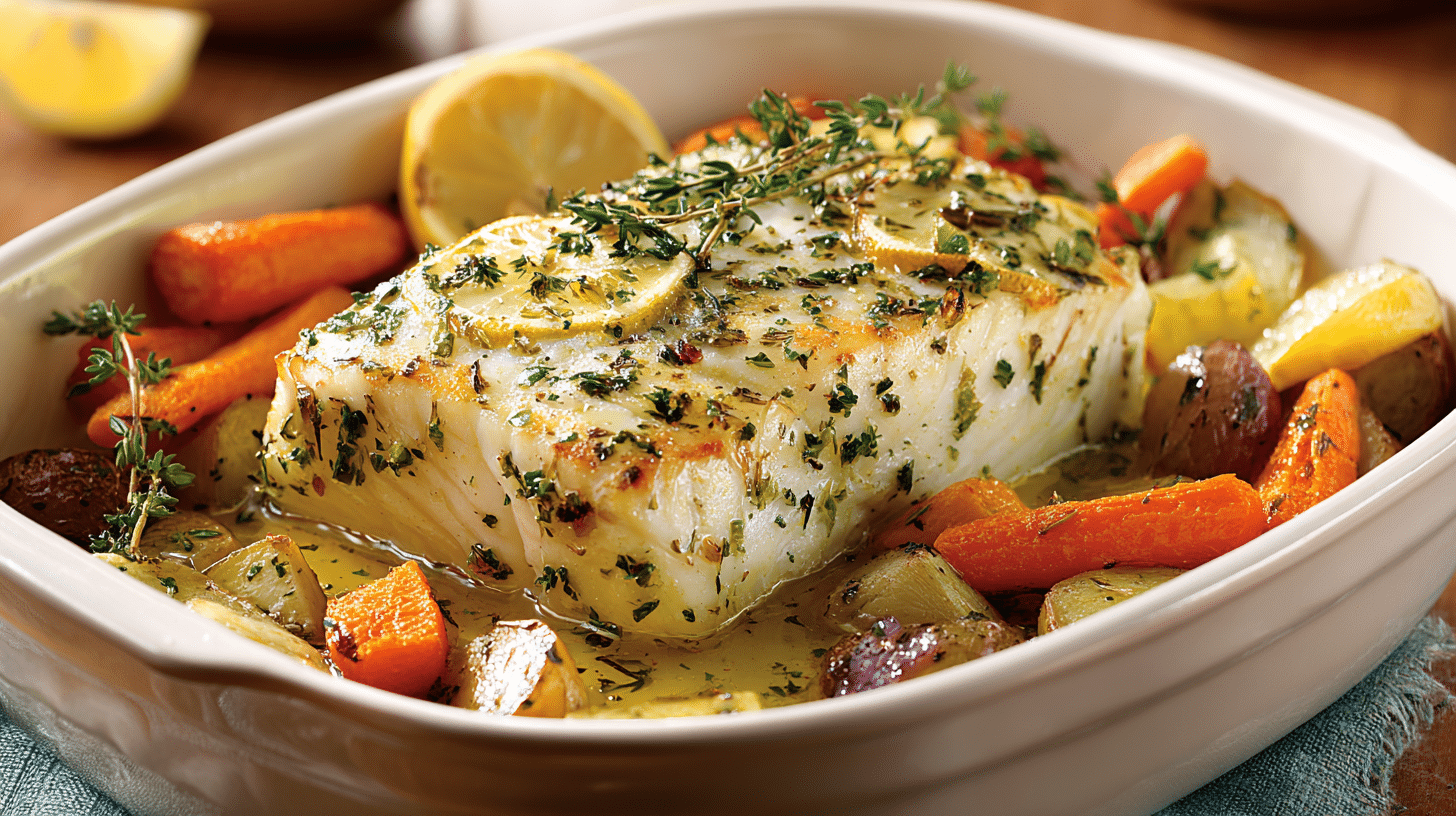
Preheat oven to 400°F. Place halibut in a baking dish, drizzle with olive oil, and season. Bake for 10-12 minutes for 1-inch thick fish.
Check the temperature starting at 8 minutes. Remove when it hits 130-135°F.
3. Grilling
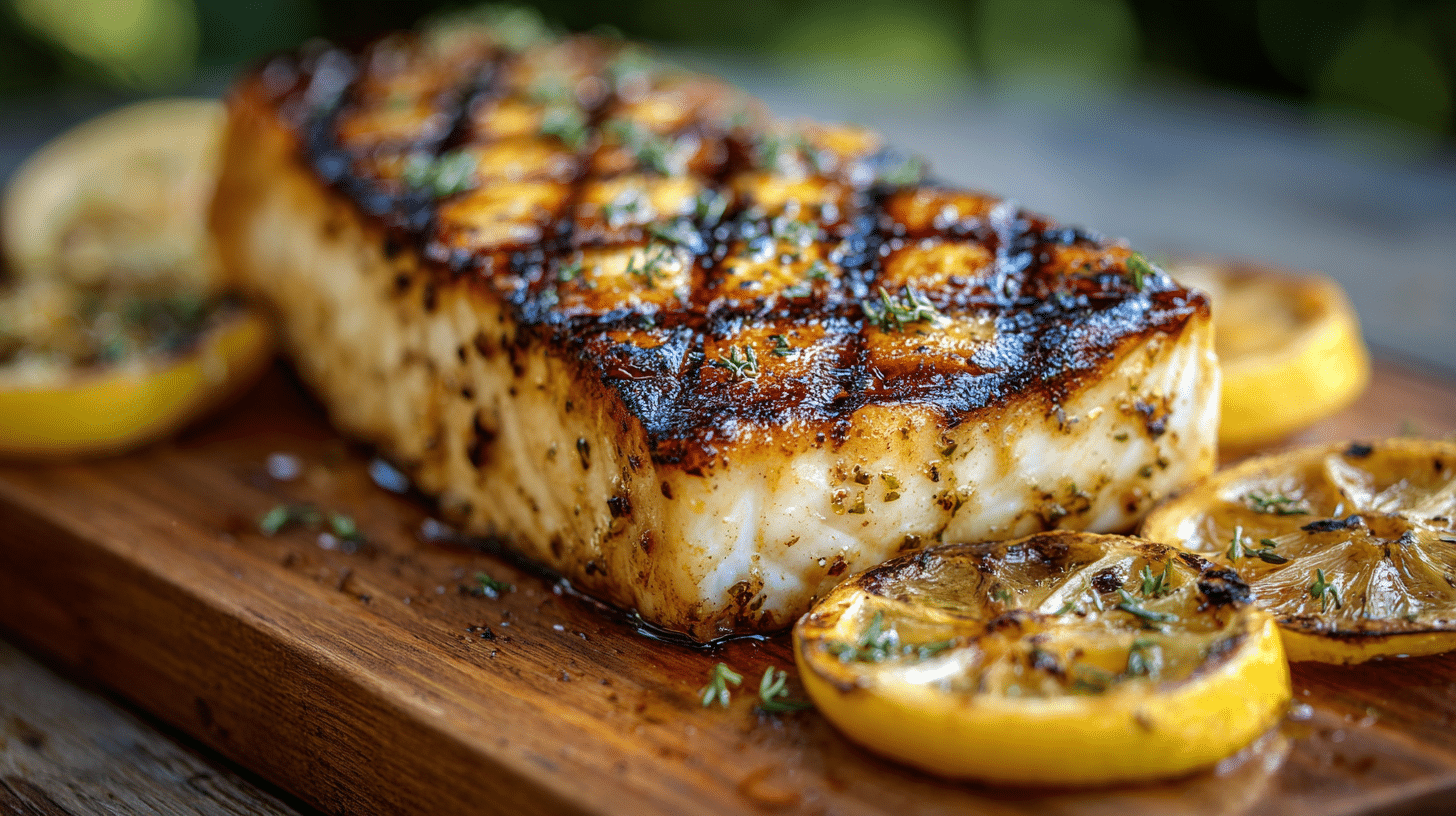
Preheat grill to medium-high heat (about 400°F). Brush halibut with oil on both sides. Grill for 4-5 minutes per side, checking the temperature frequently.
Remove when it reaches your target temp.
4. Poaching
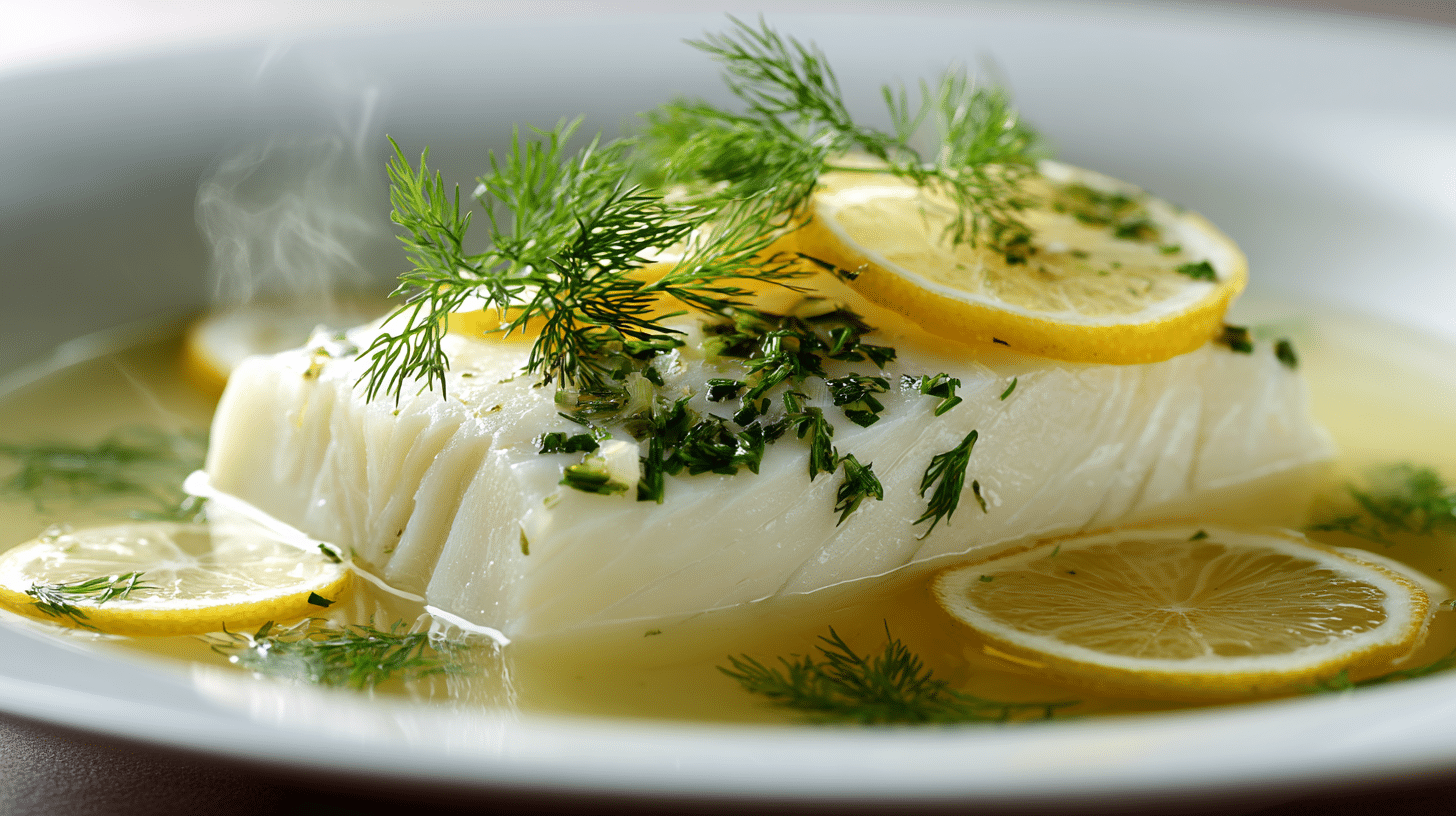
Bring liquid (water, broth, or wine with herbs) to a bare simmer. Slide halibut in and cook for 8-10 minutes. This gentle method keeps fish incredibly moist.
Check the internal temperature with a thermometer since the fish won’t brown like other methods.
Factors That Affect Cooking Temperature
Several factors can affect how long it takes your halibut to reach the perfect internal temperature.
- Thickness: This is the biggest factor. A thin half-inch fillet cooks much faster than a thick 2-inch steak. Estimate about 10 minutes of cooking time per inch of thickness at 400°F.
- Starting Temperature: Cold fish straight from the refrigerator takes longer to cook through than fish that has been sitting out for 15-20 minutes. Let your halibut lose some of that chill before cooking.
- Cooking Method: High-heat methods like grilling cook the outside quickly but are risky for thick pieces. Gentle methods like poaching take longer but are very forgiving.
- Added Fat: Brushing halibut with olive oil or topping it with butter helps conduct heat more evenly and keeps the surface from drying out.
Simple Garlic-Herb Baked Halibut Recipe
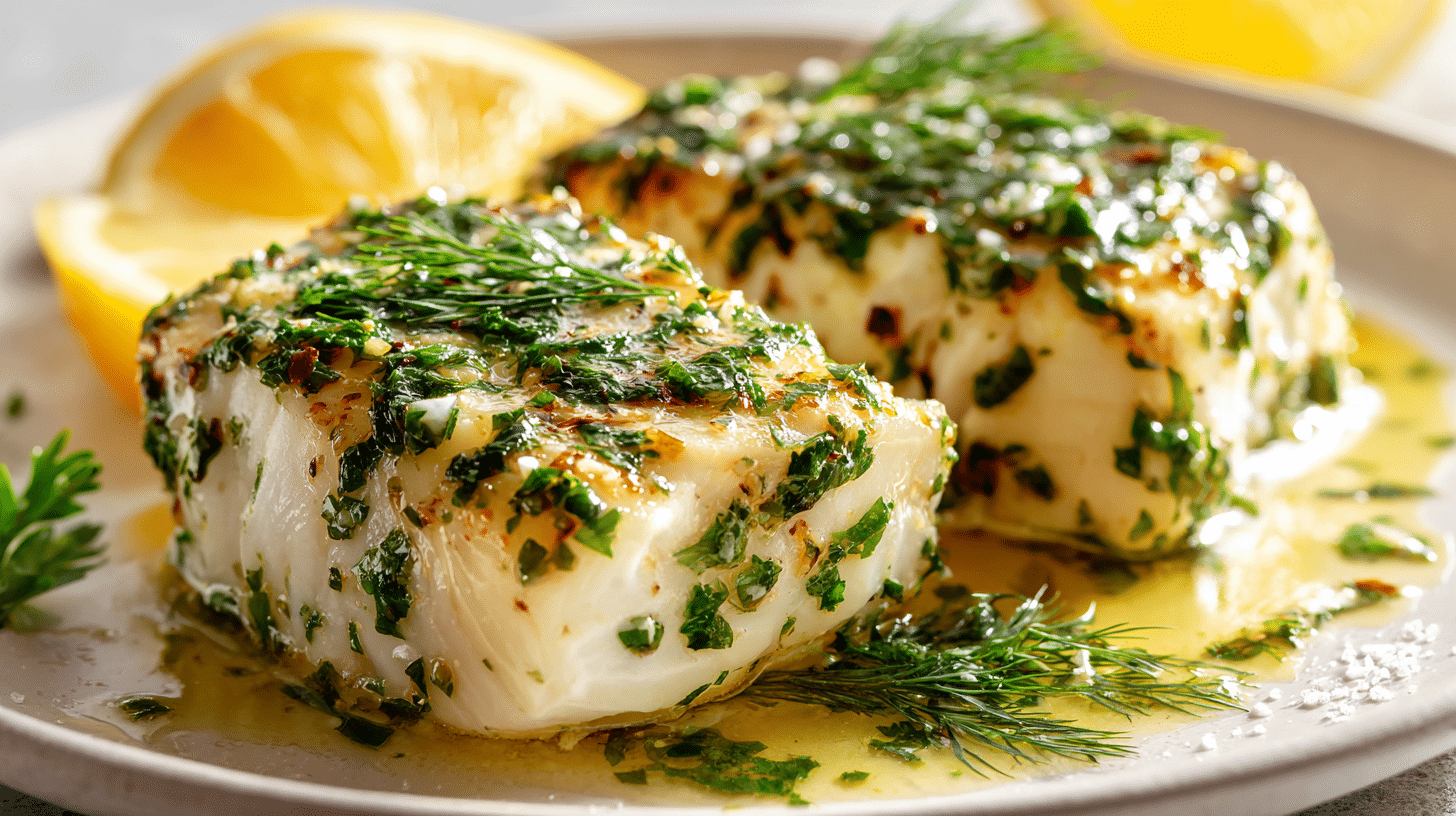
Ingredients
|
Instructions:
- Take your halibut out of the refrigerator and let it sit at room temperature for 15-20 minutes. Preheat your oven to 400°F.
- Mix together the olive oil, garlic, lemon juice, parsley, dill, salt, and pepper in a small bowl.
- Pat your halibut fillets completely dry with paper towels. Place them in a baking dish with space between each piece.
- Brush the garlic-herb mixture generously over the top of each fillet.
- Bake for 8 minutes, then check the internal temperature with an instant-read thermometer. Insert it into the thickest part of one fillet. You’re looking for 130-135°F.
- If it’s not there yet, check again every 1-2 minutes. For 1-inch thick fillets, it usually takes 10-12 minutes total.
- When your halibut reaches 130°F, remove it from the oven immediately. Tent it loosely with foil and let it rest for 3-5 minutes. The temperature will rise another 5 degrees as it rests.
- Serve with lemon wedges on the side.
How to Check If Your Halibut Is Done
Knowing when your halibut is perfectly cooked is part science and part art. Here are two reliable methods you can use to tell when your fish is ready.
Using a Thermometer
The most reliable method is using an instant-read thermometer. Insert the probe into the thickest part of the fish, angling it so the tip reaches the center.
The reading should appear within a few seconds. You’re looking for 130-135°F in the thickest part for perfect medium doneness.
Remember carryover cooking: remove the fish when it reads 125-130°F if you want your final temperature to be 135°F. Let it rest for 3-5 minutes.
Visual and Touch Cues
Before thermometers existed, cooks relied on their eyes and touch:
Opacity: Raw halibut looks translucent and glassy. When perfectly cooked, the entire fillet should be opaque white throughout.
Flaking: Gently press a fork into the thickest part and twist slightly. Perfectly cooked halibut will flake apart easily into large, moist pieces.
Texture: Touch the fish gently with your finger. It should feel firm but still have a slight give, like pressing on a soft marshmallow.
Safety Considerations
The USDA and FDA recommend cooking all fish to a minimum internal temperature of 145°F.
This is especially important for pregnant women, young children, elderly people, and anyone with a weakened immune system. If you’re cooking for any of these groups, stick to the 145°F guideline without exception.
Many chefs and home cooks prefer 130-135°F for better texture. Fresh, high-quality halibut from reputable sources that’s been handled properly is very safe even at slightly lower temperatures.
If you choose the lower temperature range, follow these safety rules:
- Buy from reputable sources
- Keep fish refrigerated at 40°F or below
- Prevent cross-contamination with raw fish
- Cook within 1-2 days of purchase
- Trust your senses: fresh halibut should smell clean, never fishy
Final Thoughts
Cooking perfect halibut really comes down to one thing: hitting that ideal internal temperature.
Aiming for 130-135°F for the moistest, most tender results or stick with 145°F for guaranteed safety, using a thermometer takes the guesswork out of the process.
Combine that with proper techniques like moderate heat, resting time, and added moisture, and you’ll serve restaurant-quality halibut at home every time. Now get in that kitchen and start cooking.
What’s your favorite way to cook halibut? Drop a comment below and share your tips or questions about getting that perfect internal temperature.








